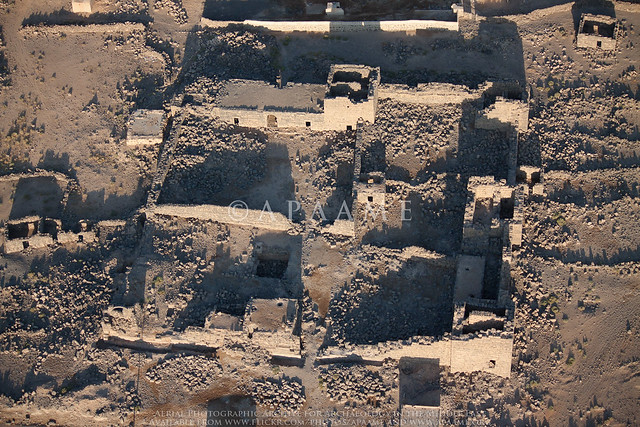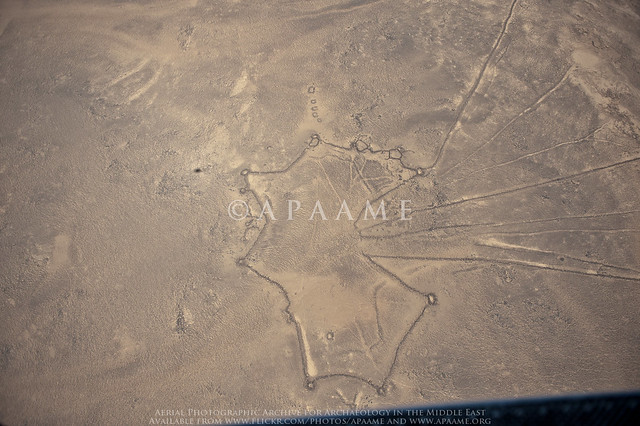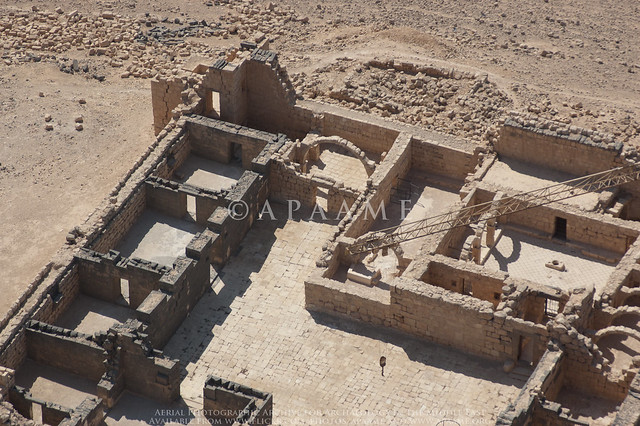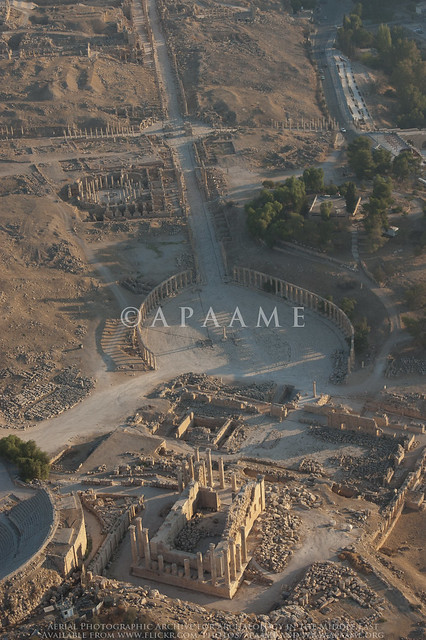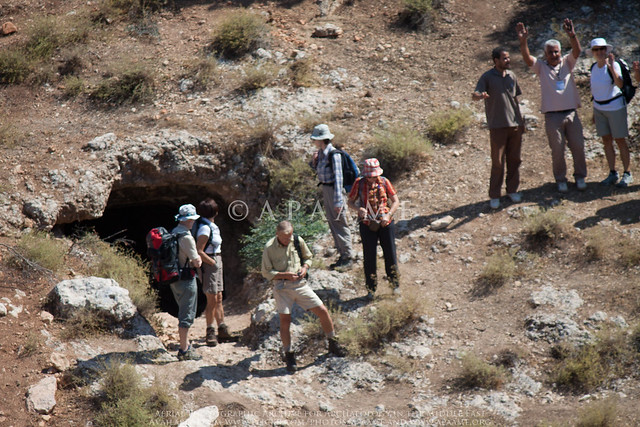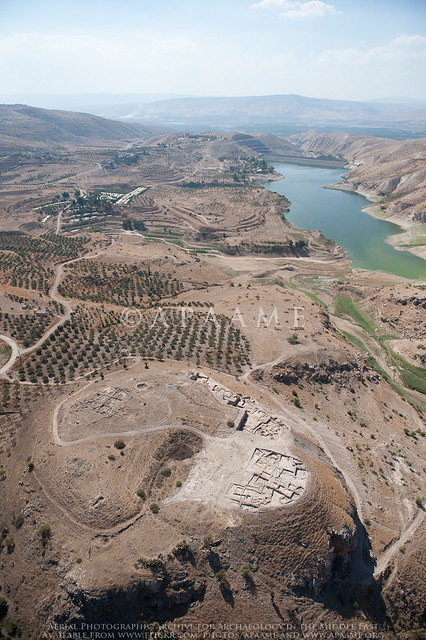We awoke in the very small hours of Sunday morning to set out to a special area of Jordan - Mesa Country.
East of Azraq on the edge of the Harrat ash-Sham lie a series of Basalt mesas (flat topped hills). On and around these mesas are an assortment of stone built structures - Wheels, Kites, Cairns, Tower Tombs and Pendants, which in this region were first described in the 1920s by pilots of the Royal Air Force on the Cairo-Baghdad airmail route. It was this landscape that we set out to investigate.
We broke from the main road at dawn and watched the sun rise over the desert as we rattled our way slowly down a questionable track - often no more than a pair of wheel ruts over the pebbly desert floor. Our first stopping point was a couple of Wheels surrounded by Cairn Rings. These were almost unrecognisable from the road, but as we got closer the walls began to be apparent. One was nestled in the slope of the hill while the other lay prominently on top of a rise of basalt boulders. Between these Wheels was a Bullseye Cairn - unfortunately illicitly excavated - but still associated with some Safaitic inscriptions and flint artefacts.
 |
| Rajil Wheel with Cairn Ring in the early morning sun. Photographed by Rebecca Banks. |
We then returned to our trusty 4WDs (the tyres were unfortunately not so trusty) and continued on our way east. We knew we were getting close when the landscape changed to this:
 |
| Mesas in the Qattafi area. Photographed by Rebecca Banks |
On the agenda was climbing four of this group of Mesas - Qattafi Mesa 2 (named 'Tell A' by Rees, an RAF pilot), Mesa 3, 'Maitland's Fort' (Mesa 4, again named by an RAF pilot) and Mesa 7 or 'Boyer's Butte' as we have come to know it. It sounds easy, but when you have one of these sitting infront of you, you begin to doubt your fearless leader. After a bit of courage and some concentration not to put your weight on the wrong boulder, you reach the top and the view is absolutely breathtaking. Not a living soul in sight, and the only noise is the wind.
The most prominent features of these mesas are Tower Tomb Cairns, visible as small 'pimples' on their surfaces, easily visible from surprisingly far away. The size of the rounded basalt boulders on these mesas provide the perfect building material to construct these large burial mounds and other features. On two of the mesas, these Tower Tombs were incorporated into Pendants - a tail of smaller cairns connected to the larger burial cairn at the head. Other cairns also littered the surface of the mesas, but it was predominantly the Tower Tombs that had associated inscriptions, varying from ancient to modern.
 |
| Tower Tomb on Qattafi Mesa 7. Photographed by Rebecca Banks |
 |
| Inscription associated with Qattafi Pendant 3 on Mesa 2. Photographed by Rebecca Banks |
Unfortunately many of the cairns we came across had been illicitly excavated, with the interiors hollowed out by those looking for burials and assosciated grave goods. As a result it will be very difficult to verify how many of these cairns were indeed used for burials, or whether they served another purpose.
 |
| An illictly excavated cairn (Qattafi Pendant 4) on 'Maitland's Fort'. Photographed by Rebecca Banks |
Driving out into this country has its rewards, but the journey is not to be taken lightly. The rough terrain means that a punctured tyre is more than likely, and the lack of mobile phone reception makes a satellite telephone a must! Thankfully this time we suffered from only one punctured tyre...
 |
| Our Pajero after running afoul of a wayward stone. Photographed by Rebecca Banks. |
 An observer of the Royal Flying Corps in a Royal Aircraft Factory B.E.2c reconnaissance aircraft demonstrates a C type aerial reconnaissance camera fixed to the side of the fuselage, 1916. Image: IWM Q 33850. Source: Wikimedia Commons.
An observer of the Royal Flying Corps in a Royal Aircraft Factory B.E.2c reconnaissance aircraft demonstrates a C type aerial reconnaissance camera fixed to the side of the fuselage, 1916. Image: IWM Q 33850. Source: Wikimedia Commons.
























